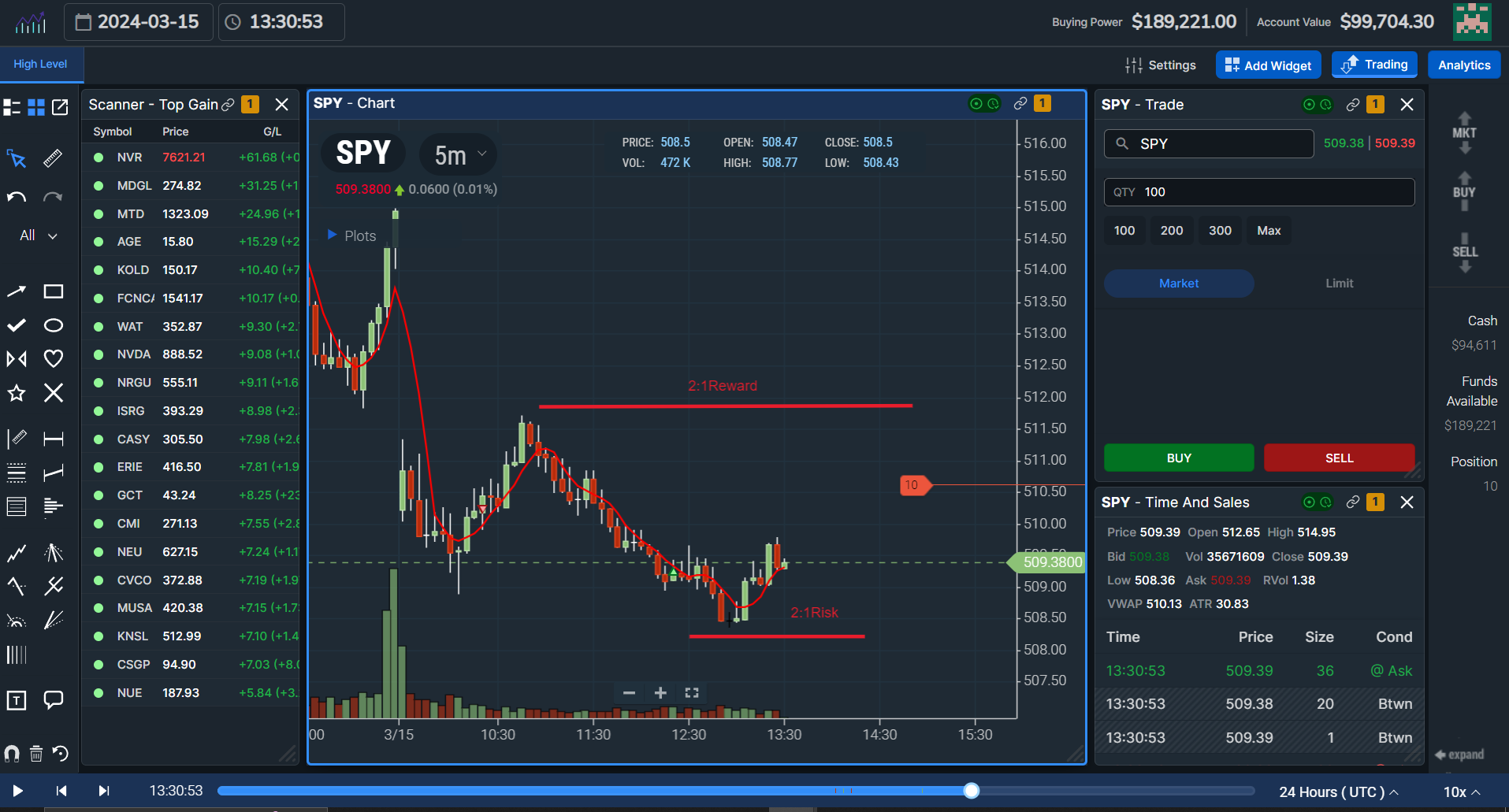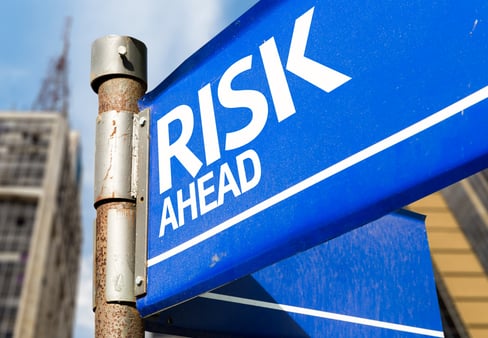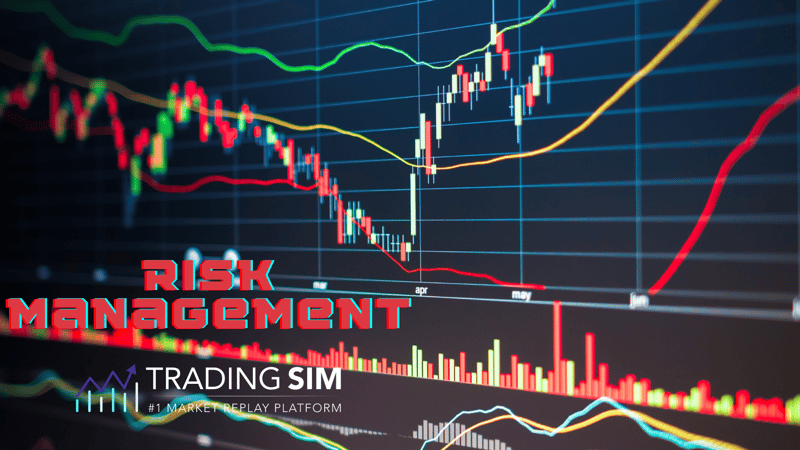Risk management trumps everything in trading markets. Without it, you have no strategy, no safe-guards, and no longevity in the business. The road to success in trading is littered with the destroyed accounts of traders who lacked the ability to manage risk. It is rule #1 in trading: keep your losses small.
Unfortunately, many aspiring traders enter the trading world with delusions of grandeur, expecting success and riches promised to them by the one-off stories of successful investors, or trading gurus selling educational services. What you don't see often are the stories of their blowups. It's all about survivor bias. But blow-ups occur more often than we see:
If trading is going to be your vehicle to financial freedom like many want it to be, you must be hyperaware of your human weakness and the impact emotional challenges and uncertainty can have on your trading.
How to practice this? We recommend a realistic simulator. What better way to hone your risk management skills, test your emotional fortitude, and practice your strategies in a safe environment? We'd argue there is no better way.
Why Risk Management Matters
William O'Neil is one of the most famous investors of all time. He delivered consistent returns for decades and founded the William O'Neil Co. and Investors Business Daily. How did he achieve such success for so long? His first rule for trading was always to cut losing stocks quickly from your portfolio.
The whole secret to winning big in the stock market is not to be right all the time, but to lose the least amount possible when you’re wrong.
- William O'Neil -
Risk management is important, nay critically important, to your success. Here's why: winning in the markets is a game of ratios. You can have a losing percentage as high as 70% or more, and still earn millions in the market. Qullamaggie is famously terrible at his win percentage (25%), yet he's amassed close to $100,000,000 in a decade of trading because he cuts his losses quickly.

5 Reasons to Manage Risk for Successful Trading
The market will give you a spanking quickly if you don't know how to manage risk. It is always right, yet our egos want to tell it otherwise. Don't be a stubborn trader. Here's a handful of reasons to employ risk management in your strategies:
-
Preserves Capital: The financial markets are inherently volatile, meaning prices can swing dramatically. Without proper risk management, a single bad trade can wipe out a large portion of your capital, potentially even your entire account. Stop-loss orders and position sizing are key tools to limit potential losses.
-
Promotes Discipline and Focus: The emotional swings of the market can cloud judgment. Risk management keeps emotions in check by establishing clear rules for entry and exit points. This allows you to make objective decisions based on your strategy, not fear or greed.
-
Boosts Long-Term Success: Trading is a marathon, not a sprint. Focusing solely on maximizing profits in the short term can lead to reckless decisions. Risk management allows you to stay in the game by protecting your capital and enabling you to weather market downturns.
-
Improves Trading Performance: By managing risk, you can focus on making consistent, smaller gains. Over time, these smaller wins can compound into significant returns. Additionally, analyzing your risk management through trade history helps you refine your strategy and identify areas for improvement.
-
Reduces Stress: Trading can be stressful, especially when watching your hard-earned money fluctuate. Knowing you have a risk management plan in place can alleviate some of that anxiety. It allows you to take calculated risks and accept losses as part of the trading process.
In essence, risk management is about protecting your financial well-being and setting yourself up for long-term success in the markets.
The market has a simple way of whittling all excessive pride and overblown egos down to size. After all, the whole idea is to be completely objective and recognize what the marketplace is telling you, rather than try to prove that the thing you said or did yesterday or six weeks ago was right. The fastest way to take a bath in the stock market or go broke is to try to prove that you are right and the market is wrong.
William O'Neil
Trading Strategies for Managing Risk
While specific trading strategies will vary depending on your chosen market and overall approach, here are some general strategies that can be incorporated into your trading plan to effectively manage risk:
Position Sizing:
- The 1% Rule: A common starting point, this rule suggests risking no more than 1% of your account capital on any single trade. This helps spread your risk and protects your account from a single bad trade.
- Volatility-Based Sizing: Adjust your position size based on the asset's volatility. Allocate less capital for volatile assets and more for stable ones.
Stop-Loss Orders:
- Fixed Percentage: Set a stop-loss at a predetermined percentage below your entry price (e.g., 2%, 5%).
- Volatility Stops: Base your stop-loss on an indicator of volatility, such as the Average True Range (ATR), to account for normal price fluctuations.
- Trailing Stops: Automatically adjust your stop-loss as the price moves in your favor, locking in profits and limiting potential losses on a retracement.
Risk-Reward Ratio:
- Aim for a positive risk-reward ratio. This means your potential profit should outweigh your potential risk on each trade. For example, a 2:1 ratio means you aim to make twice what you risk. Most traders try to maximize the amount of gains to losses possible. The trick is knowing when to let your winners run, something that can take years to understand.
Other Strategies:
- Diversification: Spread your capital across different assets and asset classes to reduce your exposure to any single market movement.
- Hedging: Use options or other instruments to offset potential losses in your primary holdings.
- Trade Smaller Size: If you're new to trading, start with smaller positions to build confidence and experience before risking larger amounts.
Keep in mind that these are general strategies, and you'll need to adapt them to your specific risk tolerance and trading style. Backtest your strategies on historical data to see how they perform under different market conditions before deploying them with real capital. Risk management is an ongoing process. Regularly monitor your trades and adjust your strategies as needed.

Risk to Reward Ratios: A Fundamental Concept
The risk-reward ratio (RRR) is a fundamental concept in risk management for trading. It helps you assess the potential profit you can earn compared to the potential loss you risk on a particular trade. It's one of the more popular risk strategies used in trading and one that we like here at TradingSim. To help you better understand it, here's a breakdown:
Calculating the Risk to Reward Ratio:
The RRR is a simple calculation:
RRR = (Potential Profit) / (Potential Loss)
- Potential Profit: This is the difference between your entry price and your target exit price (take-profit).
- Potential Loss: This is the difference between your entry price and your stop-loss level.

Interpreting the RRR:
-
RRR > 1: This indicates a favorable trade setup, where the potential profit outweighs the potential loss. The higher the RRR, the more attractive the trade appears from a risk-reward perspective. Aiming for an RRR of at least 2:1 (meaning you stand to gain twice what you risk) is a common starting point for many traders.
-
RRR = 1: This signifies a break-even scenario, where your potential profit is equal to your potential loss. This isn't necessarily a bad trade, but it might not be the most efficient use of your capital.
-
RRR < 1: This suggests a trade with a higher potential loss than potential profit. Generally, you'd want to avoid these trades unless you have a strong justification (e.g., a high probability trade setup with a tight stop-loss).
Benefits of Using RRR:
By focusing on the RRR, you're encouraged to consider both sides of the trade – potential gains and potential losses – before entering. This allows you to objectively compare various trade opportunities and prioritize those with the most favorable risk-reward profiles. Additionally, by aiming for a positive RRR over time, you can ensure your potential profits outweigh your potential losses, contributing to the long-term health of your trading account.
Things to Remember:
- The ideal RRR can vary depending on your trading style, risk tolerance, and market conditions.
- Don't chase high RRRs at the expense of good trading setups. It's better to have a consistent strategy with a lower RRR than a sporadic approach with a high RRR.
- Use the RRR in conjunction with other risk management techniques like stop-loss orders and position sizing for a comprehensive approach.
The Simulator Advantage: Learning Without the Loss
In the high-stakes world of trading, risk management reigns supreme. It's the difference between calculated decisions and emotional meltdowns. However, mastering risk management goes beyond just knowing the theory. It requires practice under pressure, which is where realistic trading simulators like TradingSim come in.
Here's why simulators are crucial for developing strong risk management skills:
Trading with real money can cloud judgment with fear and greed. Simulators like TradingSim provide a safe space to experiment with strategies, make mistakes, and learn from them without risking your hard-earned capital.
Applying Risk Tools: Simulators allow you to practice using essential risk management tools like stop-loss orders and position sizing. You can experiment with different risk parameters and see how they impact your potential gains and losses.
Emotional Control: The emotional rollercoaster of live trading can lead to impulsive decisions. Simulators replicate real-world market movements, helping you develop emotional discipline and stick to your trading plan when faced with volatility.
How TradingSim Can Help
TradingSim specifically plays a vital role in your growth as a trader because it closely mimics real-world conditions. These conditions and training grounds are imperative to your preparation during real, live trading sessions. After all, trading is a performance activity, much like performance sports. It requires constant dedication and improvement.
Let's look at some benefits that TradingSim offers:
-
Tick-by-Tick Data: TradingSim utilizes real-time data to simulate the market's dynamic nature. This allows you to experience price fluctuations and react accordingly, just as you would in a live trading environment.
-
Multiple Time Frames: Simulating trades across different time frames (e.g., daily, hourly) helps you understand how short-term movements fit within the bigger picture. This is crucial for setting appropriate stop-loss levels.
-
Trading Analytics: Tracking your performance through the simulator's analytics helps you evaluate your risk management strategies. You can see how adjustments to stop-loss placement or position sizing impact your overall results.
- Stop-Loss Orders: With built-in chart orders, you can quickly analyze how much or how little you want to lose on a trade. Other charting tools allow you to measure risk/reward ratios and set specific targets for wins and losses.

Building a Strong Foundation with TradingSim
By practicing with a realistic simulator like TradingSim, you will eventually develop a keen awareness for your risk tolerance and build confidence in your trading habits: The constant application of risk management tools in a simulated environment ingrains the importance of protecting your capital.
Through trial and error, you can discover the level of risk you're comfortable with, allowing you to set realistic expectations and avoid overleveraging your account. Succeeding in a simulated environment builds confidence in your risk management skills, translating into better decision-making when you transition to live trading.
True deliberate practice is a significant predictor of success.
- Dr. Brett Steenbarger Ph.D
Conclusion
In conclusion, mastering risk management is the cornerstone of successful trading. Realistic trading simulators like TradingSim offer an invaluable platform to hone these skills in a safe environment. By mimicking real-world pressures and allowing you to experiment with risk management tools, simulators equip you with the knowledge and confidence to navigate the unpredictable world of trading.













 Day Trading
Day Trading 
